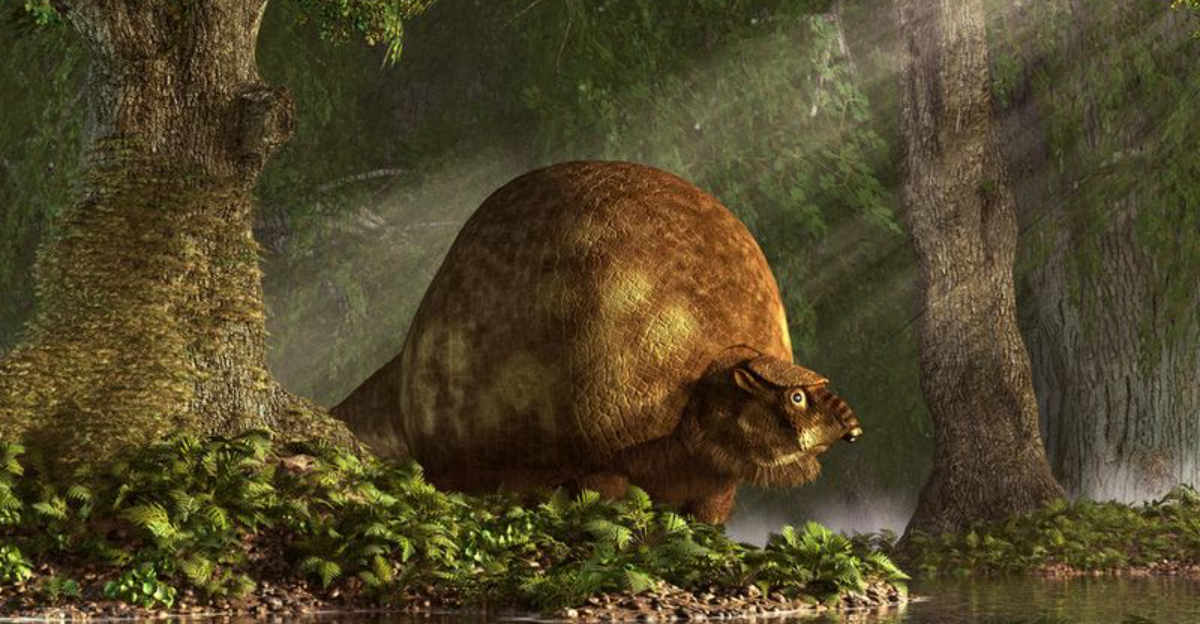During the Ice Age, North America was home to an astonishing array of massive animals that are now extinct.
These colossal creatures, ranging from towering mammoths to giant ground sloths, roamed vast plains, icy tundras, and dense forests.
Adapted to survive in harsh, glacial conditions, they dominated the prehistoric landscape with their impressive size and unique adaptations.
This article dives into 11 incredible Ice Age giants, exploring their characteristics, habitats, and the roles they played in shaping the ecosystems of ancient North America.
1. Woolly Mammoth
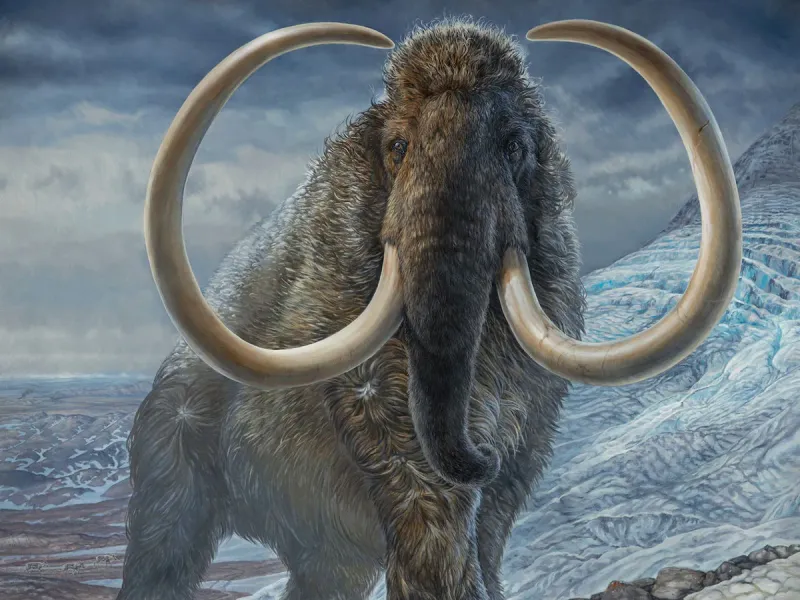
In the vast icy expanses, one could find the majestic Woolly Mammoth, a symbol of the Ice Age’s grandeur. With long, shaggy fur and towering tusks, these giants were well-adapted to the freezing temperatures. They roamed in herds, using their tusks to forage beneath the snow for grass and shrubs.
Despite their size, mammoths were herbivores, peacefully coexisting with other fauna. Their social structure was intricate, with matriarchs leading the herd. Unfortunately, climate changes and human hunting contributed to their extinction.
Today, they capture our imagination, representing a lost world of giants, with attempts at de-extinction sparking debates on ethics and science.
2. Saber-Toothed Cat
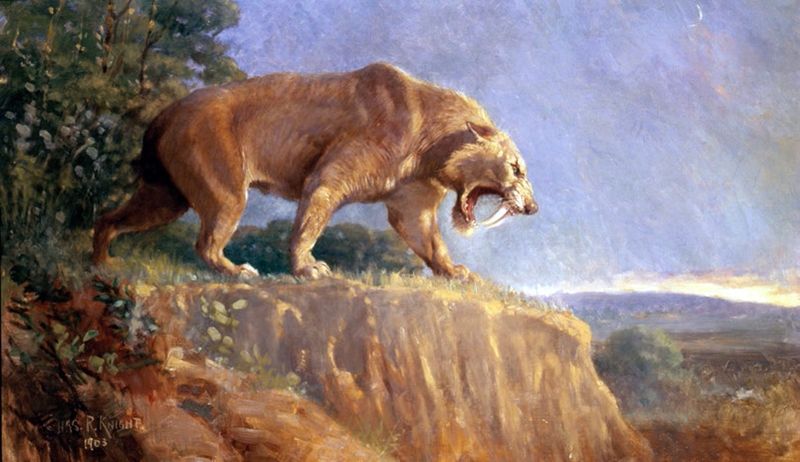
The Saber-Toothed Cat, known for its impressive canine teeth, was a formidable predator of the Ice Age. It thrived in the varied environments of North America, from forests to grasslands. These cats were skilled hunters, often preying on large herbivores.
Unlike modern big cats, they relied on ambush tactics, using their muscular build to overpower prey. Their long, sharp teeth were used to deliver fatal bites, quickly subduing their victims.
Environmental changes and competition led to their decline. Yet, their legacy endures, fascinating scientists and enthusiasts alike with their unique adaptations and fearsome reputation.
3. Giant Ground Sloth
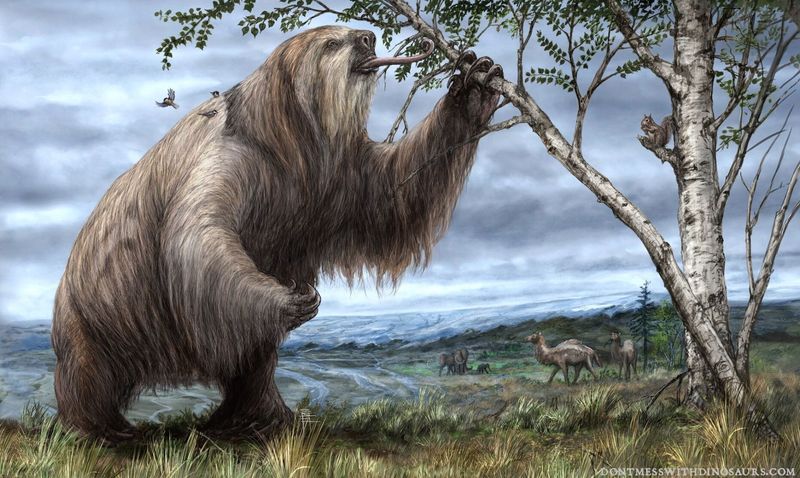
The Giant Ground Sloth was an extraordinary creature of immense size. Unlike its contemporary relatives, this sloth was a terrestrial giant, occupying forests and open lands. Its long claws were instrumental in gathering foliage, its primary diet.
Despite their size, these sloths were gentle giants, moving slowly through their habitats. Their presence significantly impacted the vegetation, shaping the landscape in which they thrived.
Over time, climate shifts and human activity led to their extinction. However, their fossils continue to provide insights into their life and the ecosystems of the past.
4. American Mastodon
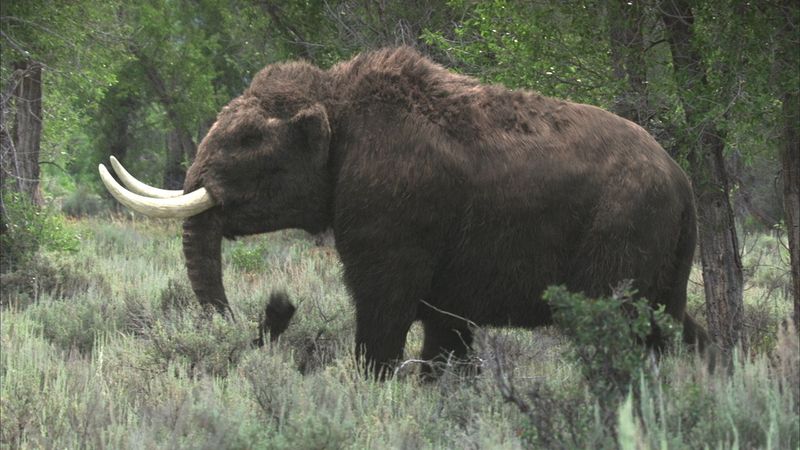
A distant relative of the mammoth, this creature was stockier and with less pronounced tusks. These massive creatures inhabited the forests and wetlands, utilizing their tusks and trunks to manipulate vegetation.
In stark contrast to the open plains of the mammoth, mastodons preferred wooded areas, where they could feed on leaves, twigs, and bark. Their presence was pivotal in maintaining the ecological balance of their habitats.
Unfortunately, as the Ice Age ended, their numbers dwindled, largely due to climatic changes and human hunting. Today, they are remembered through the fossils that narrate their ancient story.
5. Short-Faced Bear
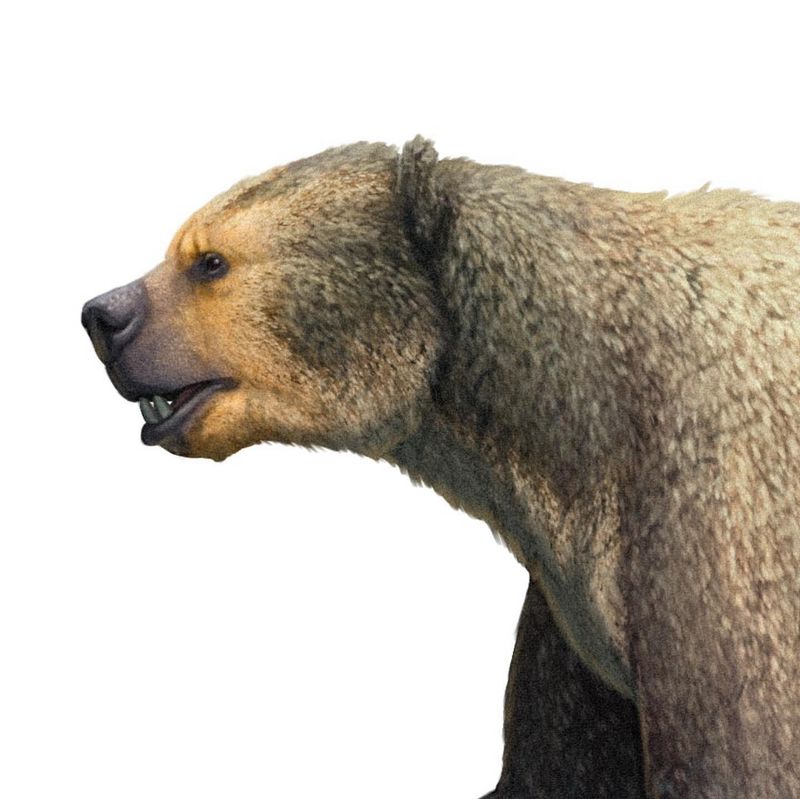
Among the most intimidating predators of the Ice Age was the Short-Faced Bear. Known for its incredible speed and large size, it dominated the diverse terrains of North America.
Unlike modern bears, this species had long legs, which facilitated swift movement, making it a formidable hunter. Its diet was varied, including scavenging from other predators’ kills.
As the environment evolved, the bear faced competition from other large carnivores and changing habitats. This led to its extinction, but it remains a subject of fascination for its unique adaptations and ecological role.
6. Dire Wolf
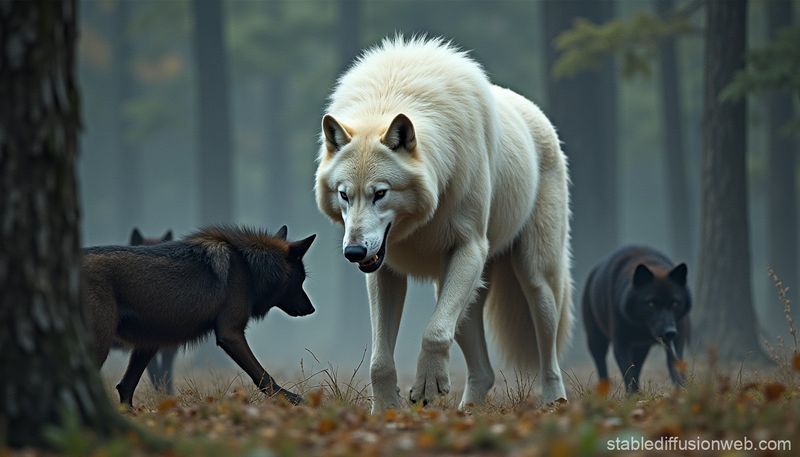
If you’re asking yourself if the famous show Game of Thrones took inspiration from the Ice Age, the answer is probably YES! Dire Wolves were among the most successful predators of their time. Larger and stronger than modern wolves, they roamed the vast landscapes in search of prey.
These wolves hunted in packs, showcasing remarkable teamwork and intelligence, taking down animals much larger than themselves. Their robust build helped them survive the harsh climates of the Ice Age.
However, as prey became scarce and competition increased, their numbers diminished. Yet, the legacy of the Dire Wolf lives on, inspiring tales and scientific studies that explore their extinction and adaptations.
7. Columbian Mammoth
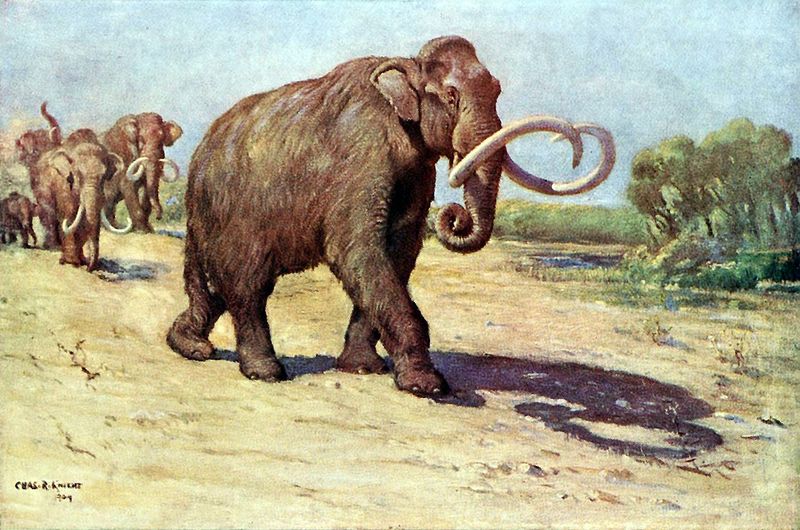
The Columbian Mammoth was one of the largest mammoth species, thriving in the southern regions of North America. Unlike its woolly cousin, it adapted to warmer climates, grazing on the vast grasslands.
Its impressive size and long tusks made it a formidable presence, and it played a crucial role in its ecosystem by influencing vegetation patterns. These mammoths were social animals, often seen in groups.
As the Ice Age ended, environmental changes and human pressures contributed to their decline. Today, they are remembered as icons of the prehistoric era, with their remains offering a glimpse into past climates.
8. Glyptodon
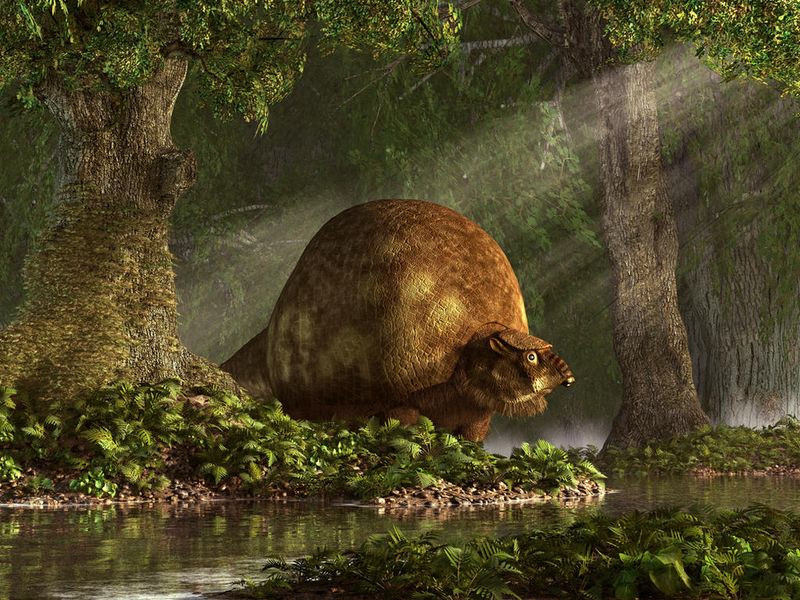
Resembling a giant armored armadillo, the Glyptodon was a fascinating creature of the Ice Age. Its tough, protective shell served as a defense against predators, an evolutionary marvel.
Occupying diverse habitats, these herbivores fed on a variety of plants. Their presence was significant in shaping the vegetation of their regions. Despite their formidable appearance, they were gentle grazers.
As the climate warmed, and human activities increased, Glyptodons faced challenges that led to their extinction. However, they continue to intrigue scientists with their unique adaptations and evolutionary path.
9. American Lion
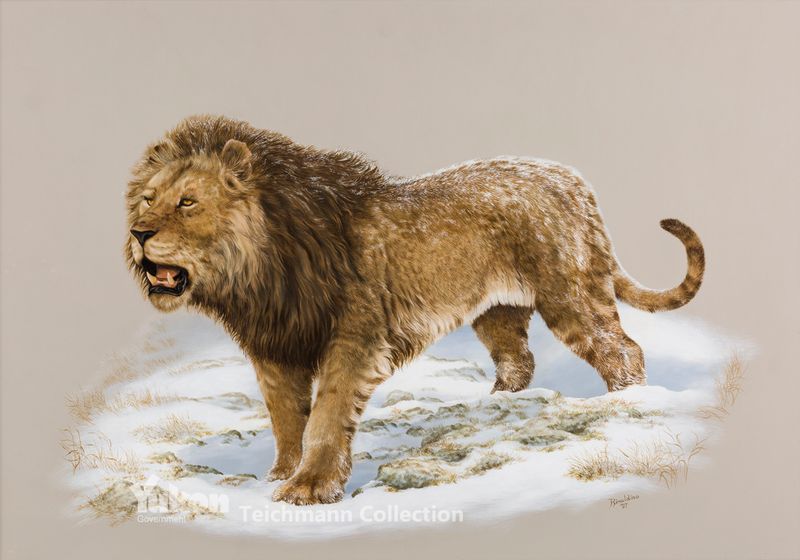
The American Lion was among the largest big cats ever to exist, roaming the diverse landscapes of North America. Unlike its African cousin, this lion adapted to colder climates.
Possessing strength and agility, it hunted a range of prey, from deer to bison, employing strategies similar to modern lions. Its roar echoed across forests and plains, asserting its dominance in the animal kingdom.
As the climate changed and prey became scarce, the American Lion struggled to survive. Its extinction remains a poignant reminder of the fragile balance within ecosystems.
10. Smilodon
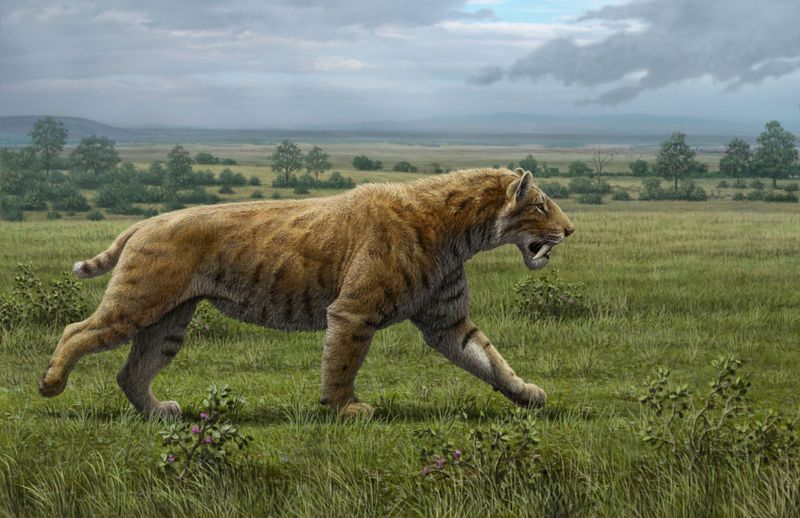
Smilodon, often confused with the Saber-Toothed Cat, was a precise hunter of prehistoric North America. Known for its saber-like teeth, it had a unique way of capturing prey.
These predators relied on ambush, hiding in dense vegetation before launching powerful attacks. Their muscular build allowed them to tackle sizable opponents successfully.
Despite their prowess, Smilodons faced extinction as climates shifted and prey populations dwindled. Their distinctive features and hunting strategies continue to fascinate, providing insights into the lives of Ice Age predators.
11. Stag-Moose
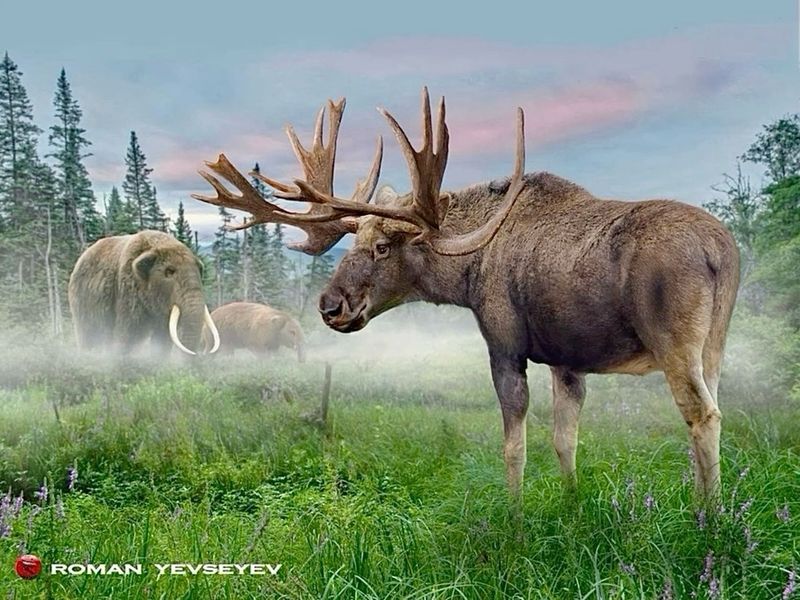
The Stag-Moose, or Cervalces scotti, was a majestic creature that roamed the forests of North America. Resembling a cross between a moose and a stag, this animal possessed broad, flat antlers and a robust body. Its long legs and powerful build enabled it to navigate through the dense forests and snowy landscapes of the Ice Age.
Primarily a herbivore, the Stag-Moose fed on a varied diet of leaves, twigs, and bark. Its adaptation to cold climates was crucial for its survival. The Stag-Moose thrived during the Pleistocene epoch, coexisting with other megafauna.
Sadly, like many Ice Age animals, the Stag-Moose vanished approximately 11,500 years ago. The reasons for its extinction remain a topic of research, with theories ranging from overhunting by humans to environmental changes.

